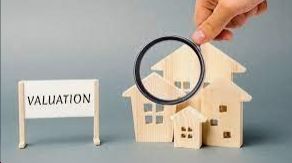How & When Should We Measure Changing Values
HOW & WHEN SHOULD WE MEASURE CHANGING VALUES
August 2016
As professionals, all appraisers must examine how values change over time. Obviously, this in required in the market conditions analysis section: whether the report format is a form or narrative, we have to address supply and demand and marketing time, which usually affect property value trends. This article is intended to answer two questions, and is limited to residential valuations: Over what period of time should we examine changes in real estate trends? And how should we analyze those trends?
The answer to the first question is subjective – the appraiser needs to use experience and judgment when examining changes in market conditions over a particular time period. But what should that time period be? That’s the subjective part. Considering that the end result of the analysis is whether or not to apply time adjustments, it would seem that the measurement should at least be from the time of the oldest comparable used in the sale comparison approach, or just beyond that date. Some appraisers apply the logic that if all comparables are recent, then adjustments for changing market conditions need not be applied. I would counter with the fact that if values are changing quickly, there is good reason to adjust. Moreover, time adjustments should be applied from the contract dates, which represent the “meeting of the minds”; thus even comparables that closed recently may have been in contract for quite a while, resulting in significant market condition adjustments.
The answer to the second question is more analytical. Whatever the data source used for the comparables, e.g., Comps Inc., Geodata, Streeteasy, MLS, etc., the appraiser can either make use of the analysis available from that source, or perform an independent analysis. Sometimes the analysis from the data source is too broad, or too generalized: for example, Comps Inc. offers residential Market Trend data by county and zip code over the last 15 years or so. But if the subject neighborhood straddles more than one zip code, or the property type is unusual in that area, the results can be misleading. It that case, a narrower, or more specific search should be performed, using a tight radius around the subject (in that neighborhood) for a particular time period. Either average or median sale prices can be analyzed (or both), to determine the direction and rate of change for market conditions.
The curve balls in all of this are, of course, the unique property or the very desirable neighborhood. Values for many high end residential properties in Manhattan have recently stabilized. The first clue to this was in the print media: the Sunday Times Real Estate section remains an excellent source for this information. When my office completes valuations of midto-high end properties in Manhattan, we always do a specific search of the property type and the neighborhood to find out what the trend has been over at least the prior year. Time on the market is always a good trend indicator. We have recently seen high end properties on the market for longer time periods than in recent years, with bidding wars now infrequent. The conclusion is that values for these properties have stabilized.
Neighborhood trend analysis is also important, since there is evidence that some neighborhoods have stabilized, while there is strong demand in others that still drive up prices. This is true throughout the Metropolitan area. Examples of this are in Brooklyn: values in most brownstone neighborhoods have stabilized in 2016, however, areas that are on the borders of the brownstone neighborhoods, or in areas that are gentrifying, (for example Crown Heights, Bed-Stuy and Bushwick) continue to show upward trends. The appraiser cannot take for granted that trends in one area are consistent with other surrounding areas.
This type of thorough analysis is also applicable for retrospective valuations, but the data can be somewhat easier to analyze. The data sources noted above are reliable, and for values in the five boroughs of New York City, NYRealEstateTrends.com is very accurate, and goes back to 1995.
As valuation professionals it is our responsibility to measure changing market conditions as accurately as possible. Diligence in that regard lends credibility to the final valuation. Thanks to the many electronic data sources at our disposal, accomplishing this is not nearly as cumbersome as in previous times, and we should all be working toward the goal of accuracy and reliability.




